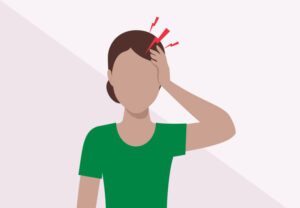Headache doctor in solapur
What is a Headache, Exactly?
Your migraine symptoms can help your doctor figure out what’s causing them and how to cure them. Most headaches aren’t caused by a serious illness, but others can indicate a life-threatening condition that necessitates immediate medical attention. best Headache doctor in Solapur works in Valsangkar Hospital
A headache is defined as any pressure or pain in the head, ears, or neck. Because nerves, muscles, or blood vessels in your face, scalp, or brain are irritated, inflamed, or not functioning properly, your head can hurt. The intensity and location of pain, as well as the length of the headache, vary greatly.

What Are The Different Types Of Headaches?
- Headache from Tension:
Muscle strain and stress are the most common causes of pain on both sides of the head. They are usually brief, although they might recur regularly.
- Migraine Therapy Doctor in Solapur:
Migraine headaches are severe, throbbing headaches that normally affect only one side of the brain. It could endure anywhere from minutes to days. It could come with strange visual disturbances (aura). Migraines strike women three times as frequently as men. Valasangkar Hospital provides the best migraine Migraine Therapy Doctor in Solapur
- Cluster Headache:
This form of headache happens frequently during the day and is characterized by pressure behind one eye on one side of the brain. Bunch migraines are more common in men than in women.
Symptoms
A headache’s qualities, as well as its consequences for daily living, can vary. A headache can cause:
- One or both sides of the head are affected
- spread outwards from a single point
- pain that is intense, throbbing, or dull
- have the feel of a
- come on gradually or all at once
- last anything from a couple of moments to a few days
- The characteristics of the pain vary depending on the type of headache.
Treatments
The most common treatments for headaches are rest and pain relievers.
Alternatives include:
- nonsteroidal anti-inflammatory medicines (NSAIDs) and other over-the-counter pain relievers
- prescription drugs for pain alleviation
- the drug is used to avoid certain diseases, such as migraines
- additional underlying conditions therapies
It is critical to follow a doctor’s instructions to avoid drug-overuse headaches.
Drug-overuse headaches are treated by lowering or eliminating the medication. A doctor can assist you in devising a strategy for safely weaning yourself off the medicine. In extreme situations, a person may require a brief hospital stay to safely and effectively manage withdrawal.
Visit our dedicated headache and migraine site for more evidence-based information and resources.
Diagnosis
A doctor can usually identify a headache type by asking the patient about:
- their manifestations
- the type of discomfort
- the pattern and timing of assaults
The doctor may order or undertake tests to rule out more serious causes of head discomfort in some circumstances. Blood samples or imaging tests, such as a CT or MRI scan, may be used in the tests. The best headache doctor in Solapur works at Valsangkar Hospital.

Causes
Normal cells generate changes (mutations) in their DNA, which leads to primary brain tumors. The DNA of a cell incorporates the guidelines that instruct it. The alterations instruct the cells to reproduce and expand quickly, even when healthy cells would perish. As a result, a tumor is formed from a mass of aberrant cells.
Gliomas:Cancers of the brain and spinal cord include astrocytomas, ependymomas, glioblastomas, oligoastrocytomas, and oligodendrogliomas.
Meningiomas: A meningioma is cancer that develops in the membranes that surround your brain and spinal cord (meninges). The majority of meningiomas are benign.
Neuromas acoustic (schwannomas): These benign tumors form on the nerves that control balance and hearing as they travel from the inner ear to the brain.
Adenomas of the pituitary gland: These growths structure the pituitary organ, which is situated close to the foundation of the cerebrum. These tumors can disrupt pituitary hormones, which can have far-reaching consequences.
Medulloblastomas: Children are the most prevalent victims of these malignant brain tumors, although they can strike anyone at any age. A medulloblastoma is a type of brain tumor that begins in the bottom back of the brain and spreads through the spinal fluid.
Tumors of germ cells: Germ cell cancers can develop in the testicles or ovaries throughout childhood. Nonetheless, microorganism cell malignant growths can once in a while spread to different districts of the body, including the cerebrum.
Craniopharyngiomas: These tumors begin near the pituitary gland in the brain, which secretes hormones that regulate numerous body systems. The craniopharyngioma progresses slowly.

